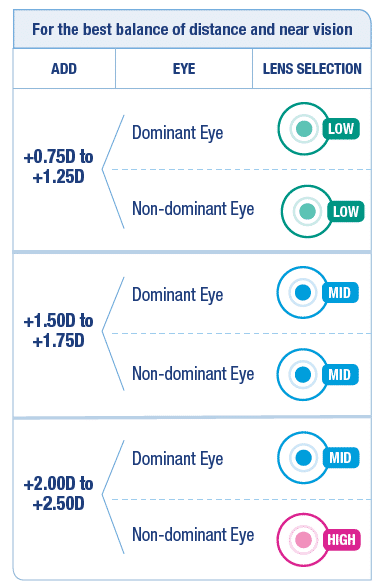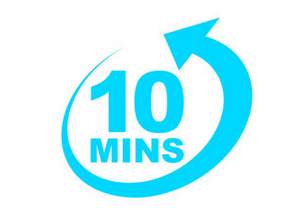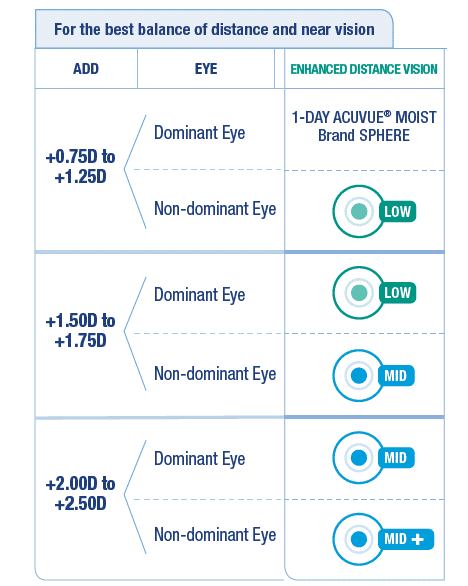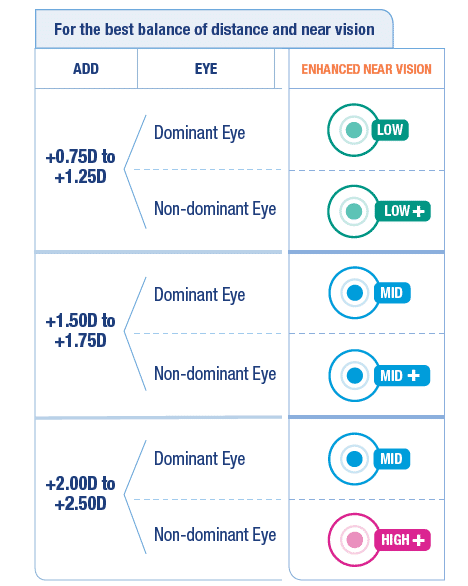PUBLICATION
1-DAY ACUVUE® MOIST MULTIFOCAL FITTING GUIDE
FITTING MOIST MULTIFOCAL CONTACT LENSES
-
1
Perform subjective refraction. Always start with a new refraction.
-
2
Determine the dominant eye using +1.00 blur test (sensory method)
- Assessing Sensory Ocular Dominance: Place a +1.00D trial lens in front of each eye alternately under binocular conditions. The eye with the lens in front when the patient reports greater visual blur is the dominant eye.
-
3
Calculated spherical equivalent. Ensure that patient's astigmatism is less than -1.00D.
-
4
Perform modified humphriss binocular balancing on the calculated spherical equivalent.
Modified humphriss binocular balance method:
- Fog the left eye with either +0.75DS or +1.00DS
- Perform best vision sphere assessment with +0.25D step for the right eye.
- Remove the fog lens from the left eye and fog the right eye.
- Repeat the best vision sphere assessment technique for the left eye.
-
5
Determine max plus spherical equivalent. Place +0.25D in front of both eyes to ensure max plus are obtained.
- In multifocal contact lens fitting, the spherical equivalent should be the "most plus" spherical. 0.25D can make a significant difference in the success of multifocal contact lenses!
-
6
Determine the minimum ADD based upon the patient's needs. Start with +0.50D lower than the initial ADD obtained from subjective refraction.
- Spectacles ADD ≠ Contact lens ADD
-
7
Select first Moist Multifocal trial lenses from fit guide. Apply vertex distance correction if greater than or equal to ±4.00D.
-
8
Allow ten minutes settling time.
- This would be a valuable time for practitioners to connect with patients - build rapport, patient education, manage expectation and settle spectacle purchase.
-
9
"Real world vision assessment"
- Focus on patient's lifestyle and daily tasks. Assess near vision with mobile phone etc.
-
10
Dispense lenses if px is happy with lenses otherwise perform vision enhancement - select second trial lenses from enhancement guide, if necessary.
-
11
Troubleshooting, if necessary.




